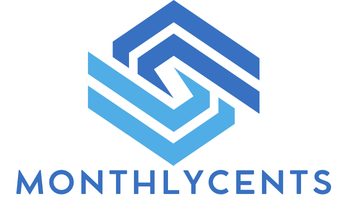Understanding Diversity and Inclusion in the Non-Profit Sector
In the context of UK non-profits, diversity and inclusion refer to the intentional integration of a wide range of backgrounds, perspectives, and identities into an organisation. This initiative fosters an environment where every individual feels valued and empowered to contribute. Diversity in non-profits goes beyond ethnic and gender representation, encompassing aspects such as age, disability, and socio-economic status, to cultivate a rich mosaic of perspectives.
An inclusive workplace culture is pivotal for the operational effectiveness of non-profit organisations. It encourages creativity, enhances employee engagement, and improves service delivery by nurturing a sense of belonging among staff and beneficiaries. Inclusion strategies involve implementing open dialogues, unbiased recruitment practices, and continuous training programs focusing on cultural competence and empathy.
Also to see : Crafting a Winning Social Media Strategy for Fitness Influencers in the UK: A Step-by-Step Guide
Currently, the state of diversity in UK non-profit organisations shows progress but remains uneven, with some sectors witnessing significant strides while others lag. To advance, non-profits must critically assess their organisational policies and actively seek ways to embed inclusivity within their fabric. This will drive not only organisational growth but also societal change, aligning objectives with the broader community they serve.
Benefits of Fostering Diversity and Inclusion
Cultivating diversity within an organisation does more than just tick a box; it fuels innovation and effective problem-solving. Diverse teams bring multiple perspectives, enhancing creativity and proposing unique solutions to challenges. This richness in viewpoints can lead to more comprehensive strategies that cater to a broader audience.
Topic to read : Maximizing Customer Satisfaction: Innovative Ways UK Retailers Can Leverage Chatbots
Diversity doesn’t only benefit organizations internally; it significantly impacts community engagement and perception, especially for non-profits. A diversified entity appears more relatable and trustworthy, encouraging community support and fostering stronger connections with various demographics. This enhanced community engagement translates into increased involvement and backing from different quarters, boosting the organisation’s impact.
Statistics consistently back these claims, showing a clear link between diversity and superior organizational outcomes. Research reveals that companies embracing diversity are more likely to outperform their less diverse counterparts. Diversity correlates with enhanced collaboration, increased employee satisfaction, and improved financial performance, underlining its profound benefits.
To sum up, nurturing diversity might be challenging but is undoubtedly rewarding. It encourages a collaborative environment where each voice contributes to the tapestry of innovation and success, leading to tangible personal and organizational gains.
Practical Strategies for Implementation
In today’s diverse and ever-evolving workplace, effective implementation strategies are crucial. Organisations striving for a more inclusive environment should focus on training programs, inclusive recruitment, and leadership commitment.
Training and Development Programs
Establishing comprehensive training programs is fundamental to fostering an inclusive workplace. These programs should involve ongoing diversity training for all staff members, empowering employees with knowledge and strategies to embrace diversity. Training should address unconscious biases and promote cultural competence to improve teamwork and innovation.
Inclusive Recruitment Practices
Implementing inclusive recruitment practices is vital in attracting a diverse talent pool. This can be achieved through techniques such as:
- Crafting unbiased job descriptions
- Broadening the applicant pool by advertising roles in diverse forums
- Evaluating blind recruitment tools
These methods ensure that organisations cultivate a rich mix of perspectives and ideas.
Leadership Commitment
Leadership plays a pivotal role in embracing diversity. Leadership commitment involves executives modelling inclusive behaviour and actively advocating for inclusion. Leaders should engage in regular diversity meetings and champion diversity initiatives, influencing the company culture positively. By demonstrating commitment, leaders can inspire employees at all levels to adopt inclusive practices.
Overcoming Challenges in Diversity Initiatives
In the nonprofit sector, organisations often encounter challenges in diversity. Common barriers include limited understanding of cultural differences and resistance to change from both staff and leadership. These issues can impede diversity initiatives and affect the overall inclusivity of the organisation.
Addressing these barriers requires strategic planning and informed decision-making. Developing robust strategies to tackle resistance to change is crucial. Organisations can initiate open dialogues and workshops that encourage staff to express concerns and learn about the benefits of diversity and inclusion. Encouraging active participation can help mitigate apprehensions.
Clear and well-developed policies for diversity and inclusion are essential. Effective policy development involves setting measurable goals and establishing accountability measures. By doing so, organisations can ensure that diversity efforts are not only implemented but also tracked and adjusted as needed. Policies must also be regularly reviewed to remain relevant and effective.
Lastly, leadership plays a pivotal role in championing diversity initiatives. Leaders should exemplify a commitment to diversity, fostering an organisational culture where diverse perspectives are valued and respected. The establishment of a supportive environment aids in breaking down barriers and fosters openness to change within the organisation.
Case Studies of Successful Diversity and Inclusion in Non-Profits
Exploring case studies of notable non-profits can provide invaluable insights into effective diversity and inclusion practices. These success stories illuminate the pathways other organizations can take to inspire change.
Innovative Practices from Leading Organizations
Many non-profits have adopted best practices for diversity and inclusion. These innovative methods serve as blueprints for others aiming to foster an inclusive environment. For instance, some organizations have established mentoring programs connecting diverse staff with senior leaders to enhance career advancement and representation.
Key Metrics and Their Impact
Tracking diversity metrics is crucial for understanding progress and areas in need of improvement. Key metrics such as employee demographics, promotion rates among minority groups, and staff retention rates spotlight the true impact of diversity strategies. When analyzed, these metrics can reveal the correlation between increased diversity and organizational growth, often resulting in enhanced creativity and problem-solving capabilities.
Lessons Learned from Diverse Initiatives
From the plethora of successful case studies, practical lessons emerge that non-profits can adapt. Emphasizing the importance of setting clear diversity goals, regular training sessions, and creating a culture of openness are among the primary lessons learned. These initiatives not only improve inclusivity but also contribute to the overall success and sustainability of organizations.
Resources and Tools for Non-Profits
Navigating the landscape of non-profits requires robust resources and tools, especially when it comes to diversity, inclusion, and community support. Numerous organizations are committed to promoting these values, offering invaluable support and guidance. Among them, the Diversity Inclusion Toolbox stands out, providing a collection of resources aimed at enhancing diversity in non-profits. Meanwhile, the Community Network Alliance offers tools to foster strong partnerships and networks, essential for creating a supportive environment.
In order to effectively implement and monitor diversity efforts within organizations, it’s crucial to engage with the right tools and resources. For instance, a Community Engagement Metrics platform helps non-profits evaluate the impact of their diversity initiatives, enabling continuous improvement and accountability.
Community partnerships play a pivotal role in the success of diversity initiatives. Establishing connections with local organizations and networks can provide the necessary support for sustainable diversity strategies. Embracing these relationships can also facilitate knowledge exchange, leading to more innovative approaches to inclusion.
To ensure ongoing progress, regularly assess and refine your diversity strategies. Utilize analytics tools designed specifically for measuring inclusion efforts, thus reinforcing your commitment to a diverse and inclusive non-profit landscape.











